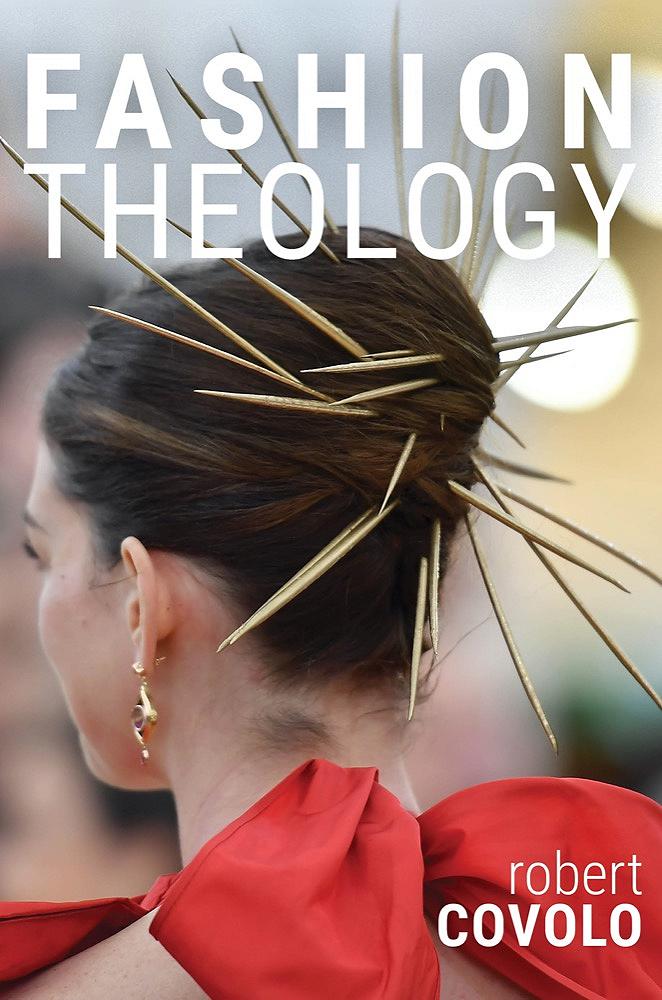
Book Review: Fashion Theology
ROBERT COVOLO. WACO, TX: BAYLOR UNIVERSITY PRESS, 2020. 216 PP. ISBN 9781481312738. US$44.99; NZ$120.13.
I was excited to see Fashion Theology published. The author, Robert Covolo is a cultural theologian with research interests in fashion and Reformed Studies. This book is an adaptation of his doctoral dissertation. As a female theologian interested in fashion, I had long noted the scarcity of material investigating the interaction between the two disciplines.
Of course, as with much that is long awaited, my expectations were too great. Despite the title, this is no definitive volume canvassing all the various possible aspects of the topic. It reads instead as what it is, the outcome of focused doctoral research. The main body of the text is a brief 116 pages, though with a significant number of pages of notes following.
The book is dedicated to the author’s daughter, and her innovative use of a pillowcase to fashion a gown (presumably as a child; [xvi]). This suggests a cognisance of the gendered nature of this topic. I mentioned my womanhood at the start of the review, because it seems plausible that as fashion has been viewed more recently in the West as the domain of women, and theology has been predominantly a male domain, that the scarcity of fashion theology has in part a gendered cause.
The book starts with a history of selected theologians’ treatments of the issue, the theologians in question being Tertullian, Augustine, Aquinas, Calvin, Kuyper and Barth. An entire history would have been a large undertaking, and so the author has restricted his survey to three significant pre-Reformation thinkers, and then three Reformed theologians. Given his own interest in Reformed Studies, this is an understandable selection. I was fascinated to read some of the nuances of their thinking, and indeed to realise how much more it appears to have been viewed as a proper topic of theology in the past.
However, it was quite evident in this brief history how often theological treatment of the topic became entangled with notions of womanhood. I found myself longing to know how women of each era might have reflected upon this topic.
Covolo then moves to considering fashion as public discourse. At this point he begins to engage more thoroughly with fashion theory and other related theoretical discourses and different ways of making sense of the relationship between faith and fashion.
He argues persuasively, using Kuyper, that Christians should be neither “evacuating the space of fashion as ‘god-forsaken’ or blithely absorbing the logic it finds there” (65).
Fashion then is resurrected as a proper field for theological enquiry. The two remaining chapters discuss fashion as art and as everyday drama, both brief but stimulating reflections.
I was somewhat surprised that he addresses the question of whether fashion is art, without investigating the way that the crafts have been often relegated to the feminine and domestic spheres. Fashion often has sat uneasily between art and craft. On the other hand, his discussion of beauty in Catholicism and its continuing fascination for fashion is a useful conversation. The different beauties of confessional traditions continue to influence different movements in aesthetics, whether, for instance, fashion or architecture. He recognises this, proceeding to also examine the treatments of this by both Reformation thinkers and Neo-Reformed ones. He recognises this as a “sketch” (90). Hopefully his work is a spur to those in other traditions. I would be interested myself in a reflection on my own Baptist tradition’s relationship with beauty.
The chapter on everyday drama recognises the relationship fashion has to time, narrative and performance. Each of these could have formed a chapter on its own. For time, he uses the lens of Augustine. He then briefly touches on fashion as story, via Ricoeur. For drama, he notes that this has been a topic canvassed by many recent theologians.
He states in his conclusion that “not all will finish this volume fully satisfied” and expresses that “the hope has been that…the pressing import of fashion theology would emerge” (116). I believe he has realised that hope. I found myself both thankful and disappointed. I was thankful that this book is a serious one, unearthing much significant theological conversation and avenues of exploration.
However, I was particularly disappointed in how little attention this volume paid to the way gender interacts with the topic. One may understand that an historical treatment will be more likely to pick up on the men who are typically seen as having influenced theology. Yet to read this book, and to see only male theologians given space is disconcerting, particularly as the discussion moves to contemporary thought. Women very much remain objects rather than subjects here
I would also have liked to see more examination of the biblical texts on clothing, both literal and metaphorical. I think for instance of Australia’s own Rosemary Canavan whose thesis, published by Mohr Siebeck, was on Clothing the Body of Christ at Colossae.[1] Canavan’s work would have given a female interlocutor who has engaged with Scriptural clothing language.
Another potential lack I noted was that the ethics of fashion are touched on, but not dealt with in detail, for example, issues of consumerism or desire. The ethics of fashion have been canvassed more often than its theology, but it would be interesting to see them woven into a broader theology of fashion.
Of course, this book was likely to disappoint, given it is no magnum opus on all aspects of fashion theology, as the author acknowledges. I found it a stimulating read, and one which encouraged me to explore various avenues further. This is a good outcome from a brief volume, and I hope to see more on the topic emerging.
Megan Powell du Toit is the Publishing Manager at the Australian College of Theology, and the editor of Colloquium: The Australian and New Zealand Theological Review. She is also co-director of The WADR Project, which produces the podcast With All Due Respect.
[1] Rosemary Canavan, Clothing the Body of Christ at Colossae: A Visual Construction of Identity, Wissenschaftliche Untersuchungen Zum Neuen Testament, Reihe 2/334, (Göttingen: Mohr Siebeck, 2012).
